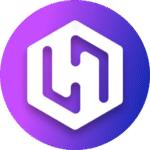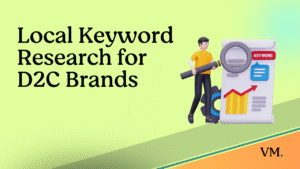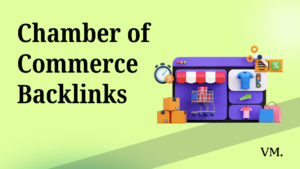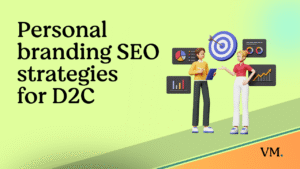The brands getting all the D2C ecommerce SEO wins aren’t just optimizing for algorithms; they’re building trust, community, and real customer value with every page.
To uncover what’s working right now, I asked a group of founders, marketers, and operators to share their best SEO wins. Their stories reveal that success comes from creative, sometimes unconventional tactics that go beyond keyword stuffing.
Below, you’ll find their unedited responses, each offering a unique perspective on how to win at D2C ecommerce SEO in 2025 and beyond.
Best D2C Ecommerce SEO Wins:
Oliver Gaywood, Newy Tees

I’ve worked in SEO and content marketing for almost 20 years and have just launched my first ecommerce store: Newy Tees (https://newytees.com.au/).
The biggest problem I see with online stores is creating spammy or low-quality posts simply to stuff keywords on their site. This is only half the battle: even if you convince Google to rank you, you’ll turn people off when they land there.
I like to start with the content idea and then build from there. I’m currently planning a series of interviews with the individuals who have contributed to my store’s growth, including designers, photographers, models, and others. A big part of my branding is about being local to Newcastle, so where I can, I try to hire local professionals to work with me.
By highlighting these people, I’m demonstrating that my brand does exactly what it stands for: it helps showcase the designers and their excellent work for me and others. Additionally, it enables me to discuss the shirts, which is a great way to increase the mention of relevant keywords and internal linking opportunities.
Far too often, I think people use SEO as a standalone tactic when it should be part of your overarching marketing strategy.”
Oliver’s approach is a powerful reminder that authentic storytelling and community involvement can be a huge differentiator.
Next, let’s see how focusing on customer pain points and long-tail keywords can drive organic growth from another founder’s perspective.
Gabe Garcia, PierrePark

We, at PierrePark, share the love that every furparent has for their dogs through our nutrient-rich single ingredient Dog Treats, which are crafted exclusively from the finest USA sweet potatoes. In addition, I consult with businesses when it comes to e-commerce, Sales, Leadership, Marketing, and Entrepreneurship.
I created blog posts targeting long-tail keywords relevant to my products, ensuring the content addressed common customer pain points and offered valuable solutions.
By optimizing the content with proper keyword placement, meta descriptions, and internal linking, I boosted organic traffic. I also focused on building backlinks from reputable sources to increase domain authority. This strategy not only improved search rankings but also drove qualified traffic that converted into sales.
Gabe’s success shows that SEO isn’t just about traffic—it’s about attracting the right visitors and converting them into loyal customers. Consistency and clarity are also key, as Sunny Zheng from TY Cosmetic explains in her winning strategy:
Sunny Zheng, TY Cosmetic

Working with both our marketing and product teams at TY Cosmetics, we always tried to grow our business online. I’ve learned that smart, simple actions that are done consistently can lead to big results.
One of our most successful marketing wins came from focusing on long-tail SEO and creating helpful content that answered the exact questions our customers were already asking.
- Write Content That Matches What Customers Search For
We noticed that many people searched for specific phrases like “private label vitamin C serum supplier.” Instead of using broad keywords, we wrote articles that used those exact words. These visitors were more serious and more likely to contact us because the content was clear and focused.
- Keep the Call to Action Simple
Each blog post had a clear next step, such as downloading our product catalog or asking for a quote. When readers found answers and knew what to do next, they were more likely to become leads. For us, this meant higher-quality traffic and more business inquiries.
- Update Your Content Often
We check our top blog posts every few months to keep them up to date. Even small changes like new photos or clearer headlines helped boost our visibility again in search results. This is something any e-commerce brand can do without needing a big budget. - Use SEO to Build Relationships
Instead of just chasing traffic, we focused on trust. People feel more confident when they see content that answers their real questions. It helped us connect better with potential clients before they even spoke with us.
This SEO approach brought us steady growth without needing constant ads or promotions. I hope it inspires other e-commerce founders to try strategies that are simple, clear, and made to last.
Sunny’s advice highlights the importance of ongoing optimization and relationship-building.
But what if you could use interactive content to both educate and convert?
Chad Walding, NativePath

As a Co-Founder and Chief Culture Officer at NativePath, my role is to build content and tools to connect with people in a real, lasting way as a Doctor of Physical Therapy and Certified Nutrition Specialist.
One tactic that has worked remarkably well for us is to build an SEO-optimized quiz funnel connected to long-tail search terms. In easy terms, we created a personalized quiz in connection with collagen that had search intent built into each question and each result. Our quiz ranks for dozens of specific phrases people search for around collagen types, benefits, and daily use. It provided us an opportunity to build 100,000+ new organic visits in six months without spending one dollar on ads.
We also coupled educational content to each of the quiz result pages that included keywords, and the content was written in a natural tone, not intended to sound salesy. Our bounce rate reduced and our conversions improved because users felt they were receiving real, relevant guidance, not just a push to sell.
Chad’s story is a great example of how interactive content can boost both engagement and SEO performance.
Authority and authenticity also matter, as Zazie Productions demonstrates with a unique approach to content:
Zazie, Zazie Productions

I’ve operated multiple small ecom stores over the years—everything from niche merch drops for experimental music collectives to sound design packs and limited-run creative tools. Currently, I sell exclusively via Gumroad under my solo brand Zazie Productions, focusing on digital products like VST presets, sound libraries, and AI-assisted productivity tools for artists.
Here’s one tactic that consistently outperformed everything else, especially for early-stage DTC stores:
Tactic: “Authority Leak SEO + Embedded Product-Led Content”
I wrote pseudo-editorial blog content targeting long-tail search queries, but with a twist:
Rather than keyword-stuffing product pages, I reverse-engineered ranking articles in adjacent domains (like Medium or Reddit threads), rewrote better versions hosted on my own store’s blog, and embedded the store’s product as a “convenient reference” rather than a pitch.
Example:
Instead of a page titled “Best Sample Pack for Industrial Techno,” I’d write:
“How I Built a Scoring System for Harsh Noise FX (and the One Thing I Had to Resample)”
—then, casually link to my own FX toolkit.
These posts would be shared on Discord servers, subreddits, or niche forums—not to drive sales directly, but to build backlink authority and engagement from high-intent readers.
Results from one 2022 store launch:
- 23% of traffic came from organic Google within 30 days (off <10 backlinks).
- Blog readers converted 3.4x higher than visitors from social.
- 60% of first-time buyers also signed up for the email list through an embedded freebie.
I still use this technique today on Gumroad by embedding storytelling blurbs into the product descriptions and linking them subtly in community posts.
Zazie’s tactic is a masterclass in blending editorial value with subtle product placement—a win for both SEO and conversion.
Finally, let’s look at how leveraging user-generated content can create a flywheel of trust and organic reach, as Kate from Irresistible Me shares:
Kate Ross, Irresistible Me

Irresistible Me is a beauty company specializing in hair extensions and wigs. Here are some insights I’d like to share with you:
We invited customers to post photos or videos of themselves wearing our hair extensions on social media, using our brand tag and a hashtag (#IrresistibleMeHair). Afterwards, we picked the best posts and added them to our website, on product pages, and in a “Customer Gallery” section.
We’ve also added keywords, alt text, and descriptions to these posts so search engines can find them easily. We linked back to the original posts, which sent traffic to our social media and got more people sharing.
Fresh, real content helped our site show up higher on Google, and people trust us more when they see real customers loving our extensions. It built a community feel and got customers excited to join in.
Next, Priyanshu from KappaX shares how targeted keyword research and interactive content helped them rapidly boost SEO and organic traffic.
Priyanshu Sharma, KappaX

We supercharged KappaX’s SEO by targeting the keywords around Interactive Advertising and ad Formats. The Keywords chosen were:
– Long Tail
– Less Competitive (Under 20 KD as per Ahrefs)
– Had Medium Volume (Depending upon the niche)
– With Higher Buyer Intent
Some of the keywords were researched from our competitors.
We then started working on high-quality, visually engaging blogs that completely served buyer
intent and were embedded with interactive demos powered by KappaX.
The Result? We ranked on Google’s first and second pages for multiple keywords within just 2-3
weeks of indexing them on Google. Our Articles came into the AI Overviews, Google Discover
section, and saw a 3X increase in organic traffic.
Sebastian Garrido, Digital Marketing Manager at Vibe Adventures, explains how focusing on content-driven SEO with long-tail keywords helped their DTC brand capture high-intent traffic and build authority in a competitive niche.
Sebastian Garrido, Vibe Adventures

I am the Digital Marketing Manager at Vibe Adventures, a tour operator agency. I can help you out with your query.
When it comes to DTC ecommerce brands, the one strategy that has been driving solid growth for us has been content-driven SEO with a focus on long-tail keywords. We focused on the narrow, as opposed to the broad, highly searched volume keywords that others were bidding on. This meant marketing to a segment that was already at the point of decision, and that led to a rise in both traffic and lead conversion.
We added content that answers questions and solves problems directly relating to our product, and in doing so, we took up our own little real estate in the content marketing niche for the product field we operate in. We also made sure to optimize every single page of each of those websites for those long-tail terms, eventually sending steady page views via organic search.
Not only did this allow us to rank for a wider spectrum of search terms, but it also set us up to become an authority in our space, which significantly improved turnover and resulted in lots of engaged customer followers.
Riley Westbrook, co-owner of Valor Coffee, shares how focusing on authentic local SEO and community-driven content helped their business grow from a mobile cart to a beloved neighborhood brand.
Riley Westbrook, Valor Coffee

We at Valor Coffee have come a long way since starting with just a mobile coffee cart in 2016. Now, we have two cafes, a roastery, and a growing wholesale program. Along the way, we’ve learned a lot about what works when it comes to SEO and digital marketing, and I want to share one of the most effective tactics we’ve used to grow our business.
When we first opened Valor, we realized pretty quickly that most of our customers were local. So, we decided to double down on local SEO. But we didn’t just stick to the usual practices like optimizing for keywords. We wanted to do more. We decided to create content that was deeply connected to the community, things that mattered to people who lived nearby. This meant writing blog posts about local events, working with nearby businesses, and even highlighting the stories of the farmers who supply our coffee. This way, the content wasn’t just useful for SEO, but also built a genuine connection with our audience.
One of the first blog posts we wrote was about the local farmers we work with. It wasn’t a simple “buy our coffee” piece; we really dug into the story of how their work impacts our product. It was something our customers could relate to, especially those who wanted to know more about where their food comes from. These kinds of posts helped us connect with the community and improve our search rankings at the same time.
To make sure we were showing up in local searches, we also paid attention to the technical stuff. We kept our Google My Business profile updated and made sure our NAP (name, address, phone number) info was consistent across all the directories. While this seems like a small thing, it’s what helped us show up in local searches, and it made us feel more like a part of the neighborhood.
What we started to see over time was real growth. More people started coming in, and the ones who found us through a search were already engaged with our story. They didn’t just come in for coffee; they came in because they knew who we were, and they wanted to be part of that. That’s when we realized that good SEO isn’t just about ranking high on Google it’s about connecting with the people who matter most.
Natalia Szubrycht, Marketing Manager at Kliklekarz.pl, highlights the power of building strategic content hubs around long-tail, product-adjacent keywords to drive organic traffic and boost conversions.
Natalia Szubrycht, Kliklekarz.pl

As a marketing manager for a DTC ecommerce brand, one of the most effective SEO tactics we’ve used is building strategic content hubs around long-tail, product-adjacent keywords. Instead of targeting overly competitive product terms, we created in-depth, evergreen blog content addressing specific problems our ideal customers were searching for.
We then internally linked these articles to product pages using optimized anchor text and ensured every blog post included high-quality visuals, schema markup, and a clear CTA. Over time, this not only improved our organic traffic and rankings but also significantly boosted conversion rates from blog readers who were already problem-aware.
The key takeaway? Think like your customer, not just what they’d search when ready to buy, but what they search before they know they want your product. That’s where content can lead them down the funnel organically.
Lindy Boag, Director of Secret Weapons, shares how focusing on niche, intent-driven content hubs around “style moments of power” helped grow their organic traffic and deeply connect with their audience.
Lindy Boag, Secret Weapons

For over 15 years, we have empowered women with innovative fashion solutions to enhance their wardrobe choices. Our products are trusted by women and retailers globally, from North America to Europe, Asia, and beyond. Secret Weapons is dedicated to quality, innovation, and helping women look and feel their best.
One SEO tactic that made a measurable difference was building a content hub around “style moments of power.” Instead of chasing broad fashion keywords, we focused on specific, search-intent-driven phrases like “what to wear to a salary negotiation” or “confidence outfits for presentations.” These posts ranked quickly and attracted exactly the type of woman we design for — ambitious, intentional, and looking to show up strong.
We paired each blog with a capsule collection and internal product links, improving time on site and product discovery. This strategy grew our organic traffic by over 70% in six months, and even more importantly, it gave our audience real value that extended beyond the clothes.
My advice: don’t just optimize for search engines — optimize for the women you want to empower. When your content speaks directly to their goals, growth comes naturally.
Dionne Jayne Ricafort, Marketing Manager of CSO Yemen, shares how repurposing authentic customer stories into SEO-optimized content helped their DTC-style ecommerce store double organic traffic and build deeper trust.
Dionne Jayne Ricafort, CSO Yemen

While we’re a nonprofit, we operate a DTC-style e-commerce store that supports Yemeni artisans, and one of our most impactful growth tactics came from repurposing customer stories for SEO. Instead of chasing keywords the traditional way, we started publishing detailed blog features highlighting the real people behind our handmade products, tailoring each post to long-tail searches like “ethically made Yemeni jewelry” or “handcrafted Middle Eastern home décor.”
We combined these posts with schema markup, intentional internal linking to product pages, and user-generated content like reviews and testimonials. Within three months, our organic traffic doubled, and more importantly, our average time on page increased, signaling stronger engagement. These human-centered SEO pieces now outperform many of our paid ads in both conversion rate and brand sentiment.
The lesson? In DTC, SEO doesn’t have to be robotic. Grounding it in storytelling that aligns with user intent not only improves rankings but builds deeper trust—a crucial edge for smaller or values-driven brands trying to stand out.
Deepak Shukla, founder and CEO of Pearl Lemon, highlights how leveraging first-party data and AI-driven personalization can transform DTC ecommerce SEO and marketing, driving higher conversions and customer loyalty.
Here’s what Pearl Lemon’s PR specialist, Devajit Mutsuddy, had to say about this:
Devajit Mutsuddy, Pearl Lemon

We have had the good fortune to collaborate with numerous founders to implement strategies that yield measurable and predictable outcomes.
According to Deepak, SEO and digital marketing are about more than just driving traffic to a website; they’re also about turning that traffic into repeat customers.
One of the most powerful strategies we’ve used for our clients is using first party data in a hyper-targeted SEO strategy. Utilizing first-party data, we have examined consumer behavior, purchase trends, search intent, and intent to produce product pages and content that precisely correspond to the customer’s active search terms. The data is real and we generally see an increase in organic traffic and overall sales conversions.
Another way we’ve had a lot of success is by enabling AI-based personalization. We’re not talking about name or past order personalization. For instance, we have assisted our DTC clients in putting AI tools into place that will provide real-time product recommendations based on user behavior, boosting average order value (AOV) and engagement. Seeing this in action was amazing, and it’s a powerful experience to use content and product suggestions that feel personal to each customer.
In addition, we have assisted clients in abandoning poor SEO strategies in favor of a much more proactive and comprehensive approach to content marketing, which has allowed them to become genuinely recognized experts in their respective fields. We urge them to create comprehensive, long-form guides, useful educational materials, and just assist in providing answers to the questions that actual people are posing, all of which naturally raise their ranking. Their content churns the DTC brands into a thought-leader potential, builds trust with customers, and solidifies your position at the top of the food chain.
Debbie Hatumale-Uy, founder of Only The Sweet Stuff, shares how a community-first marketing approach fueled organic growth and built lasting customer loyalty for her niche ecommerce brand.
Debbie Hatumale-Uy, Only The Sweet Stuff

Only The Sweet Stuff — a niche ecommerce Shopify brand for crafters, by crafters. We’ve built a 20K+ combined community and scaled organically by putting connection before conversion. That same approach recently landed me on Al Jazeera, speaking on how small businesses like mine are navigating global tariffs and rising supply chain costs.
One tactic that’s consistently driven growth for us? Community-first marketing.
From sharing real behind-the-scenes content to nurturing a Facebook group of loyal customers, everything we do is designed to build trust and create belonging. And it works — 69% of our orders year to date have come from repeat customers.
No gimmicks — just genuine connection and a business built with people, not just for them.
The founder of The Party People, Dean Salakas, shares how prioritizing PR over traditional link building drove exceptional SEO results and a successful business exit.
Dean Salakas, The Party People

I built The Party People up purely on PR and achieved a significant exit. My biggest tip for people doing “SEO” would be to focus on doing PR instead of link building. My response to this callout is a prime example of that in action, but I have appeared in the media some 300 times in the last 3 years, averaging about 2 per week. This resulted in our SEO ranking being far superior to our competitors with minimal technical SEO or link building.
If you would like me to go deeper on how I did the PR happy to elaborate. You can read a little on it here, as I wrote a story for sourcebottle specifically on pitching https://www.sourcebottle.com/blog/Steal-These-10-Pitch-Hacks-to-Land-More-Media-Features.
Clare Jones, Outreach Manager at Custom Neon, explains how harnessing user-generated content has been a cornerstone of their SEO and marketing strategy, driving trust, engagement, and increased organic reach.
Clare Jones, Custom Neon

Custom Neon is a global manufacturer and retailer of custom-designed LED neon lights and signs.
One tip or tactic I would recommend is harvesting UGC.
User-generated content is one of the most powerful, authentic, and cost-effective ways that a business can choose to promote its business or products. We use it heavily, and in the early days, it’s how we built our business from the ground up.
UGC has proven successful time and time again because it resonates the most with the aspirations and lifestyles of real consumers, allowing brands to deliver a more customized and targeted shopping experience.
Furthermore, UGC promotes trust and legitimacy in a brand. There is no better advocate for a business than a satisfied customer posting great reviews and imagery, inspiring other consumers to make a purchase too!
It’s the most cost-effective way to increase web content and showcase your product portfolio and capabilities, whilst also creating a stunning aesthetic that draws people in and keeps them on your site longer. All you need to do is ask permission.
At Custom Neon, we are fortunate, our LED neon signs are very photogenic, and the very nature of the products ensures that they will be photographed, whether it is for a wedding, event, home decor, or business signage.
To generate as much UGC as possible, we ensure our customer service and product integrity is 110%, we know our customers will be delighted with their purchase, inside the packaging, along with a thank you note, we include a fun vibrant flier that illustrates how to hang the sign, the flier also says, “We would love to see your sign in action! Tag us on Instagram @customneon.
The sign is out of the box, switched on, and looking awesome. We know our demographic is Insta-savvy and will be snapping images immediately! Whilst they are caught in that excitement, we want in on the action!
Once tagged, we always respond by congratulating them on their event and signage design. We’ll then ask if they’d mind if we used their stunning imagery on our site, social or other relevant PR, and most people are only too happy to oblige.
Previously, to generate new followers and UGC, we hosted a competition for previous customers only.
They were to share an image of their previously purchased Custom Neon sign on their socials using #mycustomneon
The winner was chosen at random and won a $500 Custom Neon Voucher.
One of the stipulations was, if you entered the competition, we were able to use the images for our website, socials, and relevant PR. This massively increased the amount of imagery we had that we could actively pitch to niche-specific publications such as:
www.forbes.com/home-improvement/holiday-decorations/halloween-front-door-ideas/
www.realhomes.com/design/kitchen-lighting-ideas
www.thespruce.com/living-room-ideas-5194639
to gain more coverage of our business and brand.
Creating competitions with branded hashtags (#mycustomneon) is a great way to obtain a plethora of material that can showcase the capabilities of your business, provide social proof and legitimacy of your business, and also help build trust with your followers.
Sharing your followers’ content, whilst tagging them of course, helps you cultivate connections and build relationships with some of your biggest advocates and their followers.
Of course, being tagged by celebrity clients also helps https://www.instagram.com/p/CkwUrINyrKL/
Spencer Romenco, Chief Growth Strategist at Growth Spurt emphasizes the power of long-form, in-depth “Signature Authority Articles” to build brand authority, drive backlinks, and boost SEO rankings over the long term.
Spencer Romenco, Growth Spurt

I am one of the strong advocates of “Signature Authority Articles” as a practical means of creating an online presence for a brand. Long-form, in-depth articles – 10,000 words and over position a brand as an authority. These articles gain backlinks, create domain authority, and generate repeat traffic, thus making brands stand out and creating credibility for the long term. I have worked hand-in-hand with clients and seen their SEO rankings shoot to the roof upon the release of such types of content pieces.
Likewise, I realize that the secret is in the depth and value of the content. It is about coming up with something that your search engines and your audience see as invaluable.
Thank you for reading. Talking about such strategies is something I like, and it is always interesting to hear about other brands doing the same.
Hunter Collachia shares how combining hyper-localized service pages with seasonal content helped Clinton Dynamics and Farmers State Bank generate consistent organic leads and rank highly in their local markets.
Hunter Collachia, Clinton Dynamics and Farmers State Bank

SEO Tactic: Location-Based Service Content + Seasonal Relevance
We’ve seen strong SEO results by combining localized service content with seasonal timing, especially for Clinton Dynamics, a land management and excavation company in Iowa. Instead of creating general service pages like “Excavation Services,” we built highly targeted landing pages focused on both the location and intent—for example: “Excavation Services in Cedar Rapids, Iowa” and “Trail Mowing for ATVs in Eastern Iowa.”
Each page includes:
– Clear H1 and subheaders with geographic and service keywords
– Authentic project photos with optimized alt text using your keyword targets
– Internal links to related services (each URL should be linked on your site at least 5 times, the more the better)
– A short CTA encouraging people to call or request a quote
– Bonus: content scheduled around seasonal search intent (e.g., spring for food plot seeding, fall for land clearing)
This approach has resulted in consistent lead generation through organic search, even without heavy backlinking or paid traffic. It’s a low-cost, high-impact strategy for service-based DTC brands trying to own their local market.
For Farmers State Bank, we applied the same model to blog content—answering specific search queries like “What counts as a direct deposit?” or “How to enroll in eStatements” to support checking account campaigns. These posts now rank for long-tail keywords and convert directly from organic traffic.
Joseph Fanijo of Le Réussi® reveals how a focus on content-driven SEO and educational, high-value posts brought in high-intent traffic and strengthened customer trust for their luxury womenswear brand.
Joseph Fanijo, Le Réussi®

Every DTC ecommerce brand has that one strategy—the SEO tweak, email sequence, or ad campaign that quietly drove real growth. I’m teaming up with VedranMarkovic.com to create an expert roundup featuring founders and marketers who are ready to share their most effective digital marketing or SEO tactic.
Whether it was organic traffic from a well-placed blog post, a creative use of influencers, or a paid strategy that scaled profitably, your insight could help dozens of other brand builders navigating the same path.
At Le Réussi®, a luxury womenswear brand built for ambitious women, one of our key digital breakthroughs came from content-driven SEO. By consistently publishing educational, high-value posts aligned with our ideal customers’ interests—professional fashion, styling tips, and elegant trends—we began ranking for niche keywords that brought in steady, high-intent traffic.
Wrapping It Up
These D2C ecommerce SEO wins show that there’s no single formula for success. The best results come from blending technical optimization with creativity, authenticity, and a relentless focus on customer value.
Whether you’re just starting or looking to scale, take inspiration from these stories—and remember, the brands that win in SEO are the ones that never stop experimenting and learning.




One Response
Nice post. I learn something more challenging on different blogs everyday. It will always be stimulating to read content from other writers and practice a little something from their store. I’d prefer to use some with the content on my blog whether you don’t mind. Natually I’ll give you a link on your web blog. Thanks for sharing.